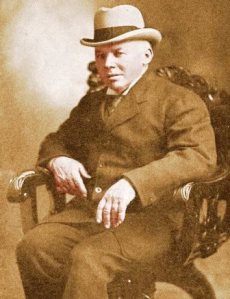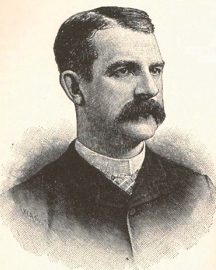Elmer Ellsworth Foster was the talk of the Northwestern League in 1887.
His career as a pitcher had lasted just one season; in 1884, while pitching for the St. Paul Apostles, he snapped a bone in his arm while throwing a pitch.
After he recovered, he returned the following year as an outfielder and second baseman with Haverhill in the Eastern New England League and hit .309.
The following spring, The Sporting Life’s Haverhill correspondent said the New York Metropolitans “have taken Elmer Foster from us.”
Hitting just .184 and, as The Sporting Life put it “reckless at the bat,” Foster went back to Haverhill in August.
In 1887, he returned to Minnesota, this time as centerfielder for the Minneapolis Millers. The club was owned by his brother Robert Owen Foster, a successful dealer of musical instruments, who with his partner J. E. Whitcomb, had taken over operations of the Millers in January.
The Northwestern League of 1887 was a hitter’s paradise owing mostly to the single-season experiments with the four-strike rule and walks counted as hits—nineteen players with at least 350 at-bats hit better than .350—and Foster led with a .415 average and 17 home runs. While his performance with the bat was noted, he received an equal amount of publicity for his great fielding.
Throughout the season, Minnesota newspapers reported that Foster’s contract would be sold to a major league team—the Indianapolis Hoosiers were the most frequently mentioned—but the deal never materialized.
When the season ended, The Philadelphia Times said Foster was in high demand:
“During the past week agents from nearly every League and Association (club) have been to Minneapolis to secure (Foster) for next season. (Horace) Phillips of Pittsburgh; (Gus) Schmelz of Cincinnati; Ted Sullivan, agent for Washington; (Emery “Moxie”) Hengel agent for Detroit; (Charlie Hazen) Morton, agent for (A.G.) Spalding, and agents for the Brooklyn, Metropolitan, and Baltimore Clubs have tried to get him.
“(John) Day, of New York, sent him this message: ‘Multrie on the way to Minneapolis. Make no promise until you see him.’ Boston also wired him for his terms. (Horace) Fogel of Indianapolis arrived one night and had Foster in tow all the next day. The bidding of all these clubs has been going on briskly, until now he is offered exorbitant figures by all the clubs.”
Foster called the fight for services a “circus;” it also turned into a controversy, with two teams claiming to have signed him. The Saint Paul Globe said:
“The circus he speaks of is a curious one, but he is sublimely unmindful of the part he took in it. The rules of the baseball covenant prohibit the signing of players until Oct. 20…Manager Fogel of Indianapolis approached Foster before that time and made a verbal contract with him, but Manager (Jim) Mutrie, of New York, took him out to Delano (Minnesota), and after midnight (on the 20th) got his signature.”
Years later, Ted Sullivan, who was perusing Foster on behalf of his Washington Nationals, described Mutrie’s method to sign Foster as a kidnapping:
“Jim Mutrie of New York (Giants) grabbed the great fielder Foster on the streets of Minneapolis…bound and gagged him, threw him into a cab and brought him ten minutes out of the city, held him there and dined and wined him until midnight…then compelled him to take $1000 advance money and a contract of $4500 (various other sources put Foster’s salary at $2400, and $4000).”
Foster, it turned out, didn’t simply have a “verbal contract” with Fogel and Indianapolis when he disappeared with Mutrie, but had, as The Sporting News said, accepted “a draft for $100,” from Fogel at the time the two agreed to terms. Fogel and Indianapolis owner John T. Brush told The Indianapolis News and The Indianapolis Times that there was “a written agreement” between Foster and the club.
Foster’s wife gave birth to a daughter during the height of the controversy. He told The Globe:
“If she had been a boy I would have named him Mutrie Fogel, in memory of the baseball managers I have been having a circus with.”
In the end, Indianapolis acknowledged that the agreement with Foster, whether written or verbal, was entered into three days before the legal signing date of October 20 and National League President Nick Young awarded Foster to the Giants.
Foster never had success at the plate during his brief major league career; he hit just .187 in 386 at-bats over parts of five seasons. But Mutrie called him “(O)ne of the best fielders in the country,” and Sullivan said of Foster’s time in the National League, “(H)e was a wonderful fielder in that league.”
After he was released by the Giants, he played 31 games with the Chicago Colts in 1890 and ’91, but his brief stay with the club allowed his name to live on with fans long after his career ended. One of the favorite subjects of Chicago sportswriter Hugh Fullerton, who called him “The rowdy of the rowdies,” Foster’s name was a staple of Fullerton’s stories for three decades after his career ended.









